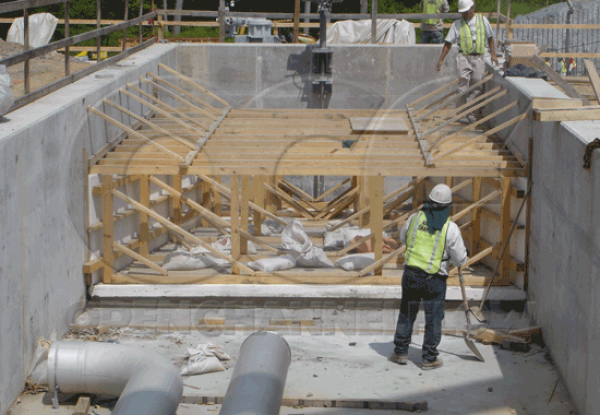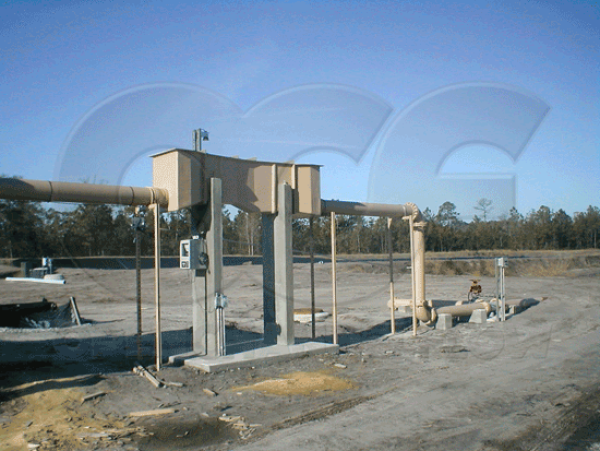This website uses a variety of cookies, which you consent to if you continue to use this site. You can read our Privacy Policy for
details about how these cookies are used, and to grant or withdraw your consent for certain types of cookies.
Cold Weather Flow Monitoring with Flumes
Using flumes to measure flows in cold climates brings a set of challenges not otherwise faced in warmer climate applications.
Some of the problems that can be encountered when using flumes in cold climates include:
- Blockage
- Submergence
- Frost heave
- Settling
- Flow bypass
Frequently flumes require more maintenance in cold climates (or during winter) to ensure accurate flow measurement can take place.
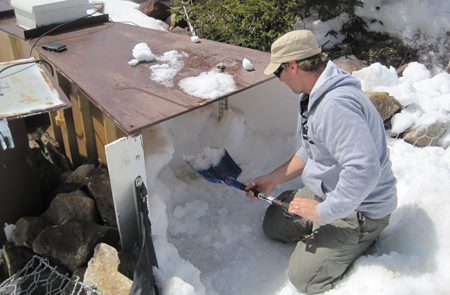
Snow and Ice Blockage
During winter months, snow and ice will accumulate in and on a flume. Periodically it will be necessary to remove the accumulation. IN doing so, it is important to take care not to damage the flow surfaces of the flume, as well as any instrumentation mountined in teh flume.
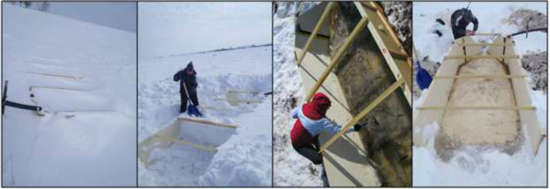
Channel Maintenance
Frequent maintenance may be necessary to keep a flume free of snow and ice. If runoff can be anticipated and a snow pack is present, it may be necessary to dig a trench upstream and downstream of the flume.
If the channel upstream of the flume is not kept clear, flow may bypass the flume. Downstream, backwater conditions resulting from snowpack or ice blockage may submerge the flume if they are not cleared.
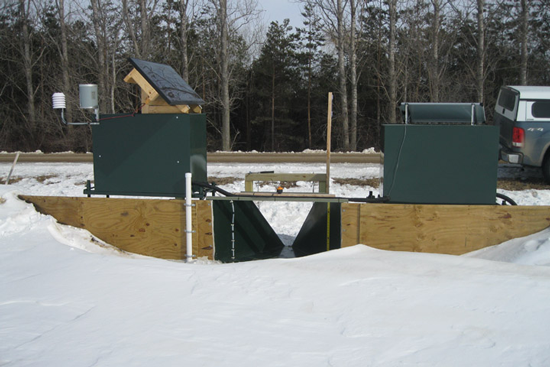
Sampling and Flow Metering
Ice buildup may also be a problem when sampler or bubbler lines are present in the flume. These can freeze quite readily resulting in either erroneously high flow readings (in the case of the bubbler line) or missed samples (in the case of the sample line). Additionally, the erroneously high flow readings may result in false triggering of the sampler or disproportionate sampling.
Frost Heave
In climates where frost heave is a concern, substantial footings may be required to ensure that the flume does not shift out of position. Here, movement due to frost heave is differentiated from settling. Frost heave is occurs when the ground soil expands due to freezing of ground water.
Solutions to frost heave typically involve increased / oversized footings or insulation, although an alternative method utilizing coarse fill soil bags can also be used.
Settling
Settling occurs when changes in the surrounding earth move a flume out of its intended position. Settling can occur due to soil saturation, soil compaction, or flow bypass / scour. Settling differs from frost heave in that it can occur at any temperature (unlike frost heave) or at any time (although it usually is greatest during the spring thaw).
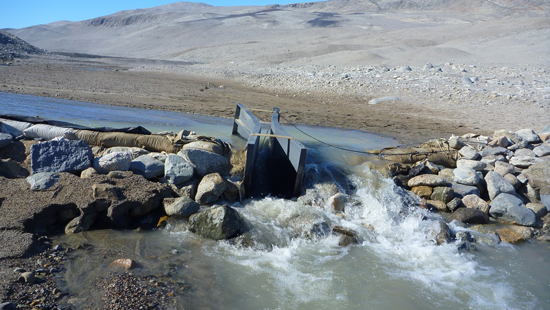
Flow Bypass
In cold weather climates, flow bypass usually occurs during the spring thaw. Here, substantial quantities of snowmelt enter the flow stream over a relatively short period of time. Unless a flume has been properly sized and the surrounding banks sufficiently built-up and reinforced, flow may readily bypass a flume.
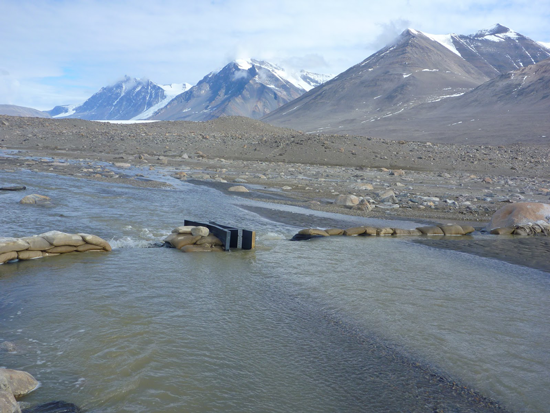
Katabatic winds - which gather enough kinetic energy due to friction with the earth to melt snow and ice - pose an unusual source of melt flow. These flows can be unexpected and quite voluminous.
Images: Snow Hydrology Research Group – Department of Geosciences – Colorado State University, Discovery Farms Minnesota - Minnesota Department of Agriculture, Stream Team Ventures on the Ice
Related Blog Posts
Explore more insights in our blog.

LOCATIONS IN ATLANTA, GA & BOISE, ID


